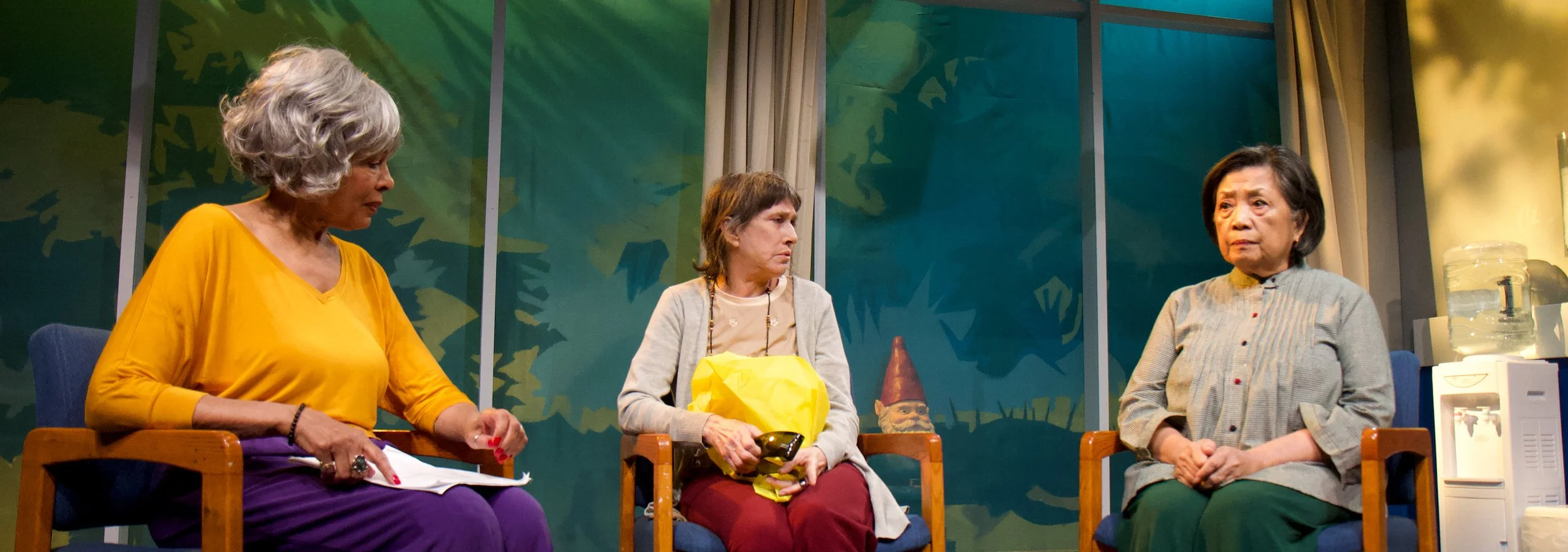The Halloween Plays, running in Brooklyn through October 31st, is far from the only spooky offering of New York’s experimental theater scene this year – but it may well be among season’s the best. The production marks the first collaboration between the Brooklyn-centric Brave New World Repertory Theatre and Carroll Gardens dance theater group Company XIV. It’s is a stellar example of the artistic depths that can result from smart companies pooling their resources. The production’s opening act harnesses the distinct neo-Baroque aesthetic of Company XIV and applies it to the creepiness of the Halloween season. Inspired by the Marquis de Sade, Dénouement—A Murderous Masquerade is a dance to the death. Set at a royal masquerade ball where the host supplies his guests with a handgun and invites them to play a series of macabre party games, Dénouement is a meditation on love, lust and devotion, in all its creepy glory. With choreography and direction by Austin McCormick, Artistic Director of Company XIV, the skilled dancers demonstrate a flare for elegant violence.
The host’s narration does a suitable job of framing the story, but Jeff Takacs’ text is easily overpowered by Dénouement’s provocative dancing. That unsettles the balance of power so central to the story – the dancing guests ought to read as mere plaything’s of the host – but no matter. A costume drama is a rare treat in an evening of one acts, which often skimp on production values. Here, Zane Pihstrom’s set and costume design are integral to the evening’s indulgent presentationalism. Dressed in period-inspired reds, mauves, and golds, the performers radiate with athletic vulnerability from their powdered wigs to their high-heeled feet. An upstage tree and several chandeliers give the impression of a fashionable dance hall, while an ornate, metallic looking proscenium decadently frames the playing space.
Directors Nell Balaban and Chip Brooks make effective use of the proscenium during the Brave New World portion of the evening. Too Much Candy, a clever reimagination of Hansel and Gretel by Cynthia Babak, puts a grown Hansel suffering from OCD on a journey to recover his repressed childhood memories. The familiar, creepy Grimm tale unfolds behind the proscenium in disorderly fragments, while the shallow playing space downstage of the proscenium exposes Hansel (Stuart Zagnit) in the present day. He neurotically muddles through his responsibilities as a family man and regularly visits a psychiatrist; he suffers an inexplicable fixation with candy.
Psychoanalytic readings of fairy tales comprise a major strain of folkloric scholarship, and Babak milks great performative comedy out of such heady analysis (pun intended). When Hansel dreams that he is locked in a cage – recall that in the fairy tale, the witch cages Hansel to fatten him up before she eats him – his psychiatrist delivers a pleasantly self-satisfied interpretation. As the doctor, Brave New World artistic director Claire Beckman is pitch-perfect in her summation. “Perhaps the cage represents the part of you, your consciousness,” she tells her patient, “that is not letting you access the memories of your youth!” She offers similarly symbolic interpretations of the cannibalistic witch and the candy. It’s a smart deconstruction of a familiar tale that helps explain its enduring power – but perhaps not quite so much as does the enactment of the fairy tale itself. Equal parts hilarious and horrific, the staging of Hansel and Gretel is a welcome reminder that fairy tales, properly told, are downright eerie.
The concluding play of the production, Greg Kotis’ Salsa, is the most conventional short play of the evening’s offerings. Set at a diner, the play opens to two men seated alone, who bond over a love of spicy food – but partway through the scene, it becomes clear that something is amiss, and when the curtain behind the proscenium rises, sinister forces are revealed. Actors Kevin Hogan and Sean Patterson have a lot of fun with their roles as the gentlemen of the diner, as does Alvin Hippolyte, as the sinister force.
It’s refreshing to see an evening of one acts featuring work with such varied aesthetic sensibilities. Each act possesses sufficient distinction to stand alone as a solitary work. Taken as a whole, however, The Halloween Plays reveals that there is more than one way to spook an audience.






